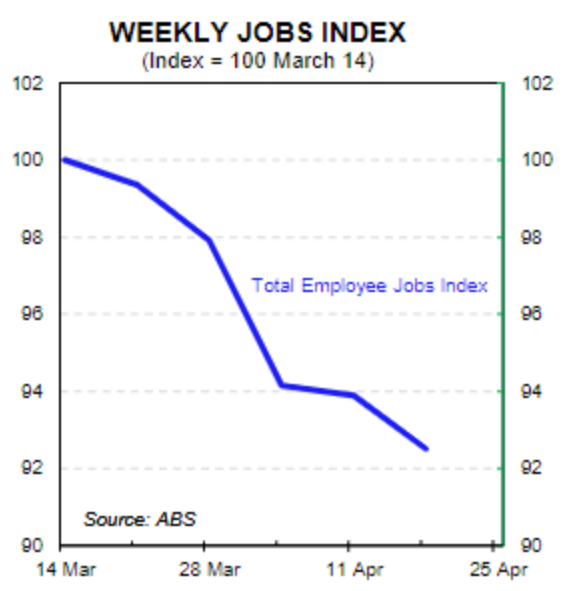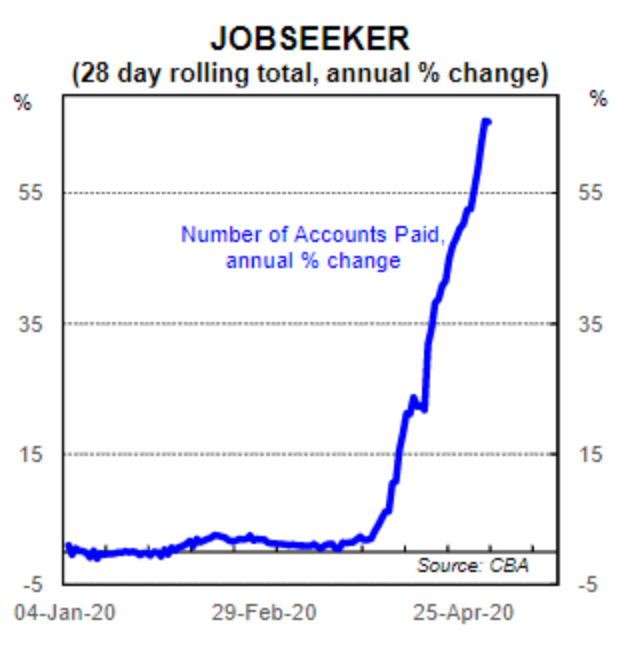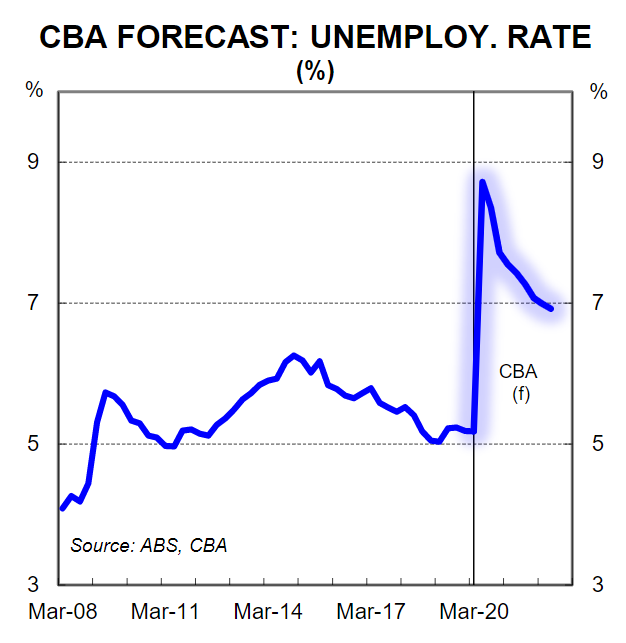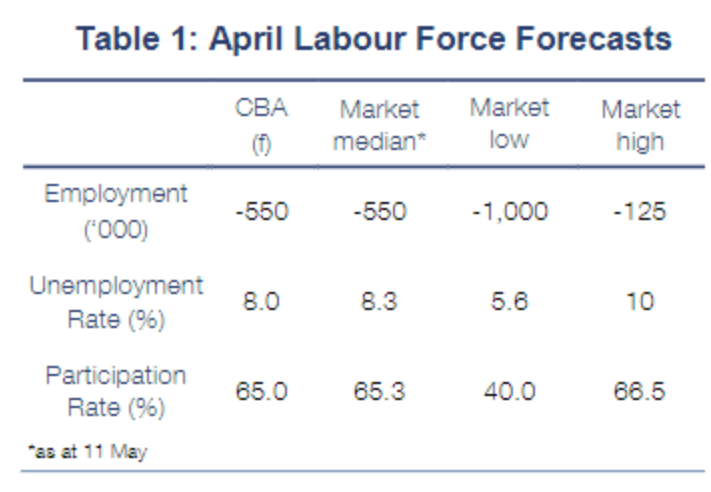By Gareth Aird, Head of Australian Economics at CBA:
Key Points:
- We expect employment to fall by 550k in April.
- We expect the unemployment rate to rise to 8.0%.
- The participation rate is forecast to drop by 1ppt to 65.0%.
Introduction:
The April employment report, due on Thursday 14 May, will throw up a horrible set up numbers. Employment will fall sharply, hours worked will plummet, the unemployment rate will spike and the participation rate is set to drop. The impact of COVID-19 and the government imposed shutdown will be evident in all of the various indicators on the labour market.
From a forecasting perspective, the April labour force data is about as hard as it gets. The huge range in market forecasts highlights the difficult task at hand for economists(see Table 1). Indeed we are shooting mostly in the dark. But there are some flickers of light that can help to guide our forecasts. These relate to: (i) what we know around the timing of survey; (ii) what we know about how the ABS defines employed and unemployed; (iii) what other data like the weekly payrolls and JobSeeker payments have indicated; and (iv) what we know about the number of people who hold multiple jobs. We go through a check list below.
A check list for the April Labour Force
- The reference weeks fall in the first half of April – the shutdown and restrictions on activity were fully imposed by then.
- According to the ABS, most people who leave employment tend to move to being not in the labour force, rather than straight into unemployment (as they were not available to work and/or they had not started to actively look for work).
- To be classified as unemployed someone must: (i) not be employed during the reference week; and (ii) have actively looked for work and be available for work in the reference week.
- A person will be classified as employed if they: had taken any kind of paid leave; were away from their job for any reason (e.g. they were stood down), and were paid for some part of the previous 4 weeks; or were away from their job for four weeks or less for any reason, without pay, but believe they still have a job to go back to (e.g. they were stood down, with no pay).
- According to the new ABS weekly payrolls jobs and wages publication employee jobs were down by 7.5% between 14 March 20 and 18 April 20. This is different from the number of people employed which is what the monthly survey measures.


- There were 13 million people employed as at March and 6% of those people have more than one job – i.e. 780k people. It is younger people in particular that have multiple jobs. Many of these people will have lost more than one job over the past month. Some will have lost one of their jobs but retained another.
We are convinced that the number of people employed will fall by less than the decline in the number of jobs. And we expect some lags in the data based on how the ABS measures employment. As such, combining all over the above information leads us to forecast in April a fall in employment of 550k, an increase in the unemployment rate of 2.8ppts to 8.0% and a fall in the participation rate of 1ppt to 65.0%. We think that the risks lie with a lower unemployment rate because the risk is a bigger drop in the participation rate than we have pencilled in.

As we have flagged on multiple occasions, the true deterioration in the Australian labour market as a result of the COVID-19 pandemic is not expected to be adequately reflected in the reported change in the level of employment or the unemployment rate(see here for our full report).
